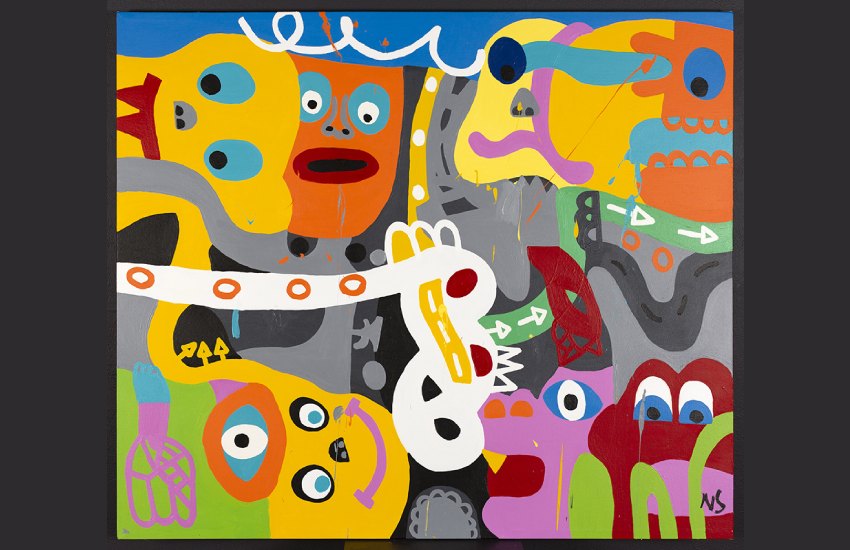Make investments for art’s sake
SuperIt’s time to change the restrictive rules governing super and artworks.

Since the COVID pandemic began in 2020, very generous tax concessions have been available for businesses to purchase artworks.
Under the temporary full expensing measure there is no limit to the amount that a business, with a turnover of less than $5 billion, can tax deduct for a painting, sculpture or other artwork that meets the definition of being a depreciating asset and is displayed in a business premise.
I recently provided tax advice for a surgeon to purchase an artwork at auction for $150,000 to instal in the waiting room of his medical practice to reduce his tax liability this financial year.
Temporary full expensing will expire at the end of the next financial year, at which point the taxation treatment of artwork will revert to the same state as existed following the five-year expiration period after the Cooper Report, on 30 June 2016.

Background
In 2010, the Super System Review (the Cooper Report) recommended that the government prohibit SMSFs from acquiring artworks on the grounds that they “pose issues” for a key rule governing such funds: the sole purpose test.
It said: “These investments lend themselves to personal enjoyment and therefore can involve current day benefits being derived by those using or accessing the assets.”
At the time about $700 million of total SMSF assets were invested in artworks and collectables, but the idea that SMSF artwork investment contravened the sole purpose test was not supported by case law.
Regardless, in 2011 the government amended the relevant act by legislating new regulations. It did not ban SMSF artwork investment but set new conditions for insurance, storage and related-party transactions. These effectively constituted a levy on new purchases.
CGT and art
Artworks have been subject to CGT since it was introduced by the Hawke government over 35 years ago, although the rules provide for complex limits and exemptions.
Complying with the CGT provisions concerning art is practically difficult, because the reason why art is purchased is not always clear at the time of purchase. Was it bought for investment? Was it bought for business? Or was it bought for personal reasons, in which case documentation may not have been retained by the taxpayer, defeating any attempt at a CGT calculation.
Artwork purchases of $500 or below have been CGT-exempt since December 1995 – a threshold that has remained unchanged since.
Originally, two reasons were given for this “special” CGT treatment of artworks:
- To avoid the difficulties that would be involved for taxpayers and the ATO in recording and assessing a multitude of small-value transactions
- To restrict the availability of the deduction for losses of listed personal-use assets
On the first reason, the Henry Review recommended increasing the threshold on the basis that it would reduce compliance costs “without establishing a tax bias to invest in high-value collectables (such as works of art)”.
On the second reason, the intent is to create a disincentive on the trading of artworks to deter speculative investment.
However, the revenue raised from levying CGT on collectables is only 0.07 per cent of the total CGT take. This raises the question as to whether the tax is worthwhile at all.
As well as causing inconvenience to taxpayers, it quarantines capital losses on the sale of artworks. But it probably represents a benefit to government revenue, since otherwise capital losses on artwork could be offset against taxable gains elsewhere. It is similar to the way gambling losses are not allowed as deductions to offset tax revenue foregone on gambling wins.
Art market issues
The Cooper Review focused on the sustainability of the superannuation system and recommended better protection for members through prudential regulation of the investments that could be made by funds.
In relation to artwork investments, it found market failure due to a lack of regulation.
“I look at the art market and it has a long way to go before being legitimate,” chairman Jeremy Cooper said.
In effect, the art market was caught up in the need for better financial advice requirements for professionals selling investment products to the SMSF market. In making its recommendation to ban all SMSF artwork investment, the Cooper Report chose negative taxation on artists over positive taxation on artwork vendors.
Politically, it was convenient to make the argument that wealthy people should not be allowed to display expensive artworks, bought with their SMSFs, at their private residences. But missing in that argument was the fact that the artworks the government sought to ban, being bought by SMSFs, were created by artists who relied on those sales to earn a living. If the art market had a perception of being illegitimate, the super art laws could have been used to reform it by imposing conditions on artwork vendors, such as professional indemnity insurance requirements, which would not have had such a dramatic impact on the livelihood of artists.
Impact of the super art laws
Since the 2011 regulations there has been a continual selldown of the super art stockpile and this has placed pressure on the market for Australian artworks. ATO statistics showed that in the first year of the super art laws alone, the value of collectables held by SMSFs fell by 26 per cent.
One study concluded: “Changes to SMSFs was perceived to have had a significant and detrimental impact on collectable art.”
It is inevitable that, to avoid the new regulations, SMSFs will sell their artwork investments and create non-concessional capital losses that will never be able to be offset against other capital gains of their funds. Taken together, the compliance costs of the new super art laws combined with non-concessional capital losses represent a deadweight loss to the art market.
This deadweight loss means consumers of art have benefited from the super art laws but artists have been disadvantaged due to a decline in demand for their work. This is borne out by statistics that show the average price of artworks traded in Australia on the primary market has decreased in the last decade, the number of artworks being offered for sale has increased and the proportion of unsold works has also increased.
The impact has been most severe on the market for newly produced Aboriginal artworks and production from this sector has declined in this period.
Anecdotally, the COVID period, where locked down taxpayers went on a spending spree helped along by government stimulus measures such as JobKeeper, managed to reverse this trend, but the art market is now returning to where it was at the beginning of 2020.
The super art laws appear consistent with the original intent of the CGT rules in relation to artworks, namely, to deter speculation. However, the impact on the livelihood of artists from these changes, as we return to the normal post-COVID, warrants consideration for a package of taxes.
Proposed super art reforms
When the super art laws were introduced in 2011, a carve-out was made for the real estate industry to sell direct property to SMSFs through limited recourse borrowing arrangements. Neither art nor direct property investments are prudentially regulated, so the only plausible explanation for the preferential treatment of the real estate industry is that its members are subject to both government and voluntary regulation and supervision.
There is no regulation of the art market and no minimum education standards for its professionals. But its members do comply with an industry standard of excellence that is normative and relies on their individual reputation and experience.
Reforming the super art laws presents an opportunity to start regulating the Australian art market for consumer protection purposes. This is not an exclusive prudential requirement for SMSFs, but a wider consumer protection issue in Australia.
It is proposed that:
1. Up to 5 per cent of the net asset value of an SMSF may be held in the form of artworks and stored at the private residence of members of that SMSF, but only in the event that the artworks have been bought from art market professionals with current professional indemnity insurance of at least $2 million, which is the same threshold as applies to tax agents.
- CGT on all artwork sales, other than those made by superannuation funds, be abolished. In other words, artworks bought for investment purposes should continue to be subject to CGT regulation, but artworks bought privately or for business should be exempt from CGT.
Conclusion
In 2011 during the Save Super Art campaign, Andrew Penn (then AXA Asia-Pacific chief executive), said: “We need to ensure that we continue to support our development culturally as well as economically. Australia has a talented but fragile visual art sector and the benefits of protecting this far outweigh the rationale for this specific proposal (to constrain SMSF investment in artworks).”
Economists David Throsby and Anita Zednik found the “breadth and depth of the output of Australia’s professional artists is enormous”, but they also found lack of income was preventing artists from spending more of their time on creative work.
The COVID period provided a brief respite from the regime of visual art taxation that had existed for the previous decade, but with the withdrawal of business tax concessions and consumer stimulus measures, Australia is now fast returning to the pre-pandemic status quo that was inhibiting its creative culture.
Michael Fox is principal of Michael Fox Arts Accountants.



